The sudden death of Jannis Kounellis, on 16 February, just when he was at the height of his activity and was called to exhibit especially overseas, has deeply affected the international cultural environment.
Kounellis has been one of the greatest visual operators of our time, one of the leading exponents of Arte Povera, even if at distance from the group of Turin. Starting in the sixties, with his strong identity, he has contributed to substantial linguistic changes.
Kounellis was consistent and rigorous; connected to the Art History from which he stemmed the energy to go further with autonomy and regenerative spirit. A hardliner who rejected the mediation to establish a dialectical confrontation with the existing and to be alternative. Proceeded arguing passionately and emphatically, the founding reasons of his work and, although accustomed to shocking inventions since his eruption in the purposeful context of the second half of the Sixties, continued to surprise with his plastic creations. Essentially he intended to restore the centrality of art conquered by the masters of the past, giving rise to a line of authentic development of aesthetics and ethical profile. Making a liberating act of breaking with the introduction of a specificity not subjected to traditional rules, conveyed by significant natural elements and of the everyday life, he was one of the first to get out of the schematics and the static nature of two-dimensional experiences; interacting with the exhibition space, building site-specific works of art. In other words he was a model painter of the third dimension and of the public space, difficult to match, for modernity and mobility, intensity and quality.
Certain constants of his work are not repetitions: express continuity and circularity of a process that expands from an engine core. His on-site interventions – physically and culturally related to different exhibition sites – always offered unsettling news. Obviously he did not neglect the perception and gave the work a proper lyrical significance, able to rejoin the shape-object to the pictorial peculiarities and to balance the density of contents. Intent on taking an effective action of renewal with anti-academic principles, anti-romantic and anti-bourgeois, he avoided rhetoric and decoration; he encompassed in producing other fields encroaching into unknown territories. Consequently he gave to the artifact an unusual multisensorial connotation. At the same time attempted to contaminate the present to promote a more enlightened future by reason and ideals. Did not tend to abstraction, to an aseptic conceptual: pursued with tenacity visually tangible outcomes, finalizing impulses from the lived and the observation of behaviors within the socio-economic and political system. Over the years, his means of expression had become clearer and more refined.
To Kounellis goes the merit of having been able to offer free and international insights, however, without denying history. Leveraging creative potential, divergent thinking and vital tension, he managed to make an epic poeticpolitical enterprise, a revolutionary act that marked a sea change. To the last, with the radical nature of his strategy, he was opposed to stereotypes with strength and appearance.
Apart from the initial phase of his works with letters, numbers and directional signs, when it was not clear the immediacy of their effectiveness communication, he had captured the attention of the art system in January 1969 with the explosive shows of the twelve horses, in the gallery-garage L’Attico in Rome directed by Fabio Sargentini (later seen at the Venice Biennale, in London and New York). As recently mentioned, the other curcial intervention for his ideological development was that of July of that year the VIII Biennial of Contemporary Art in San Benedetto del Tronto on the theme “Beyond painting” (interdisciplinary event curated by the writer, Gillo Dorfles and Filiberto Menna). There he had closed the entrance to the room reserved for him with travertine stones from the unusual pictorial-plastic effect. With that transgressive operAction, he wished to make a conceptual gesture against current representative arrangements and institutional spaces, with strong references to the world of work. Since then he had often used stones in large installations and, with variations, had replied that provocative closing at Palazzo Fortuny in Venice, Rome, Baden Baden, London, Cologne.
For his participation in the exhibition we met in Rome, sometimes even in his home where the ‘living room’ table was a common packing crate and on the floor ‘laid’ a coal pile bordered by a white stripe. The friendly relations with him had remained unchanged over the years and I have often taken advantage of his availability to interview him. The last time on July 16 at the Visual Arts Center Pescheria in Pesaro, directed by Ludovico Pratesi, where he presented a dynamic performative installation, with a horse that was pulling a funeral procession evoking an inescapable, mournful ritual, almost prescient …
With the death of Jannis we lost the body (which, by his will, now rests in the Non-Catholic Cemetery of the Pyramid Cestia), but also for those to come, will always remain alive his extraordinary works of great creative, in a constant innovative and ideological tension, which had a high and popular opinion of the art. February 20, the funeral – exciting and dramatic as his work – which took place in the Church of the Artists in Piazza del Popolo in Rome, was attended by many friends and admirers, also came from afar, to be close to his companion Michelle Coudray and son Damiano with family. In addition to the officiating priests spoke Tiziana D’Acchille, director of the Academy of Fine Arts by Ripetta, who recalled his last meeting with the students, occurred a few days before, when was conferred the honor of professor Emeritus. At the end the critic Bruno Corà – his close friend and connoisseur of his work – has paid tribute with a loving and learned speech from which we present some excerpts:
To Jannis Kounellis
Kounellis has left us. In front of his bare we are stunned and disbelieving. He left us quickly, as he used to act in recent years, faster, faster and faster, because he thought that reality and our own time were changing with a rapidity never before conceived. This explains much of the most recent stages of his artistic action. […]
Kounellis is one of the greatest painters of Italy and modern Europe, a great poet of the image, an extraordinarily sensitive and gentle man, very strong and very fragile, with a unique imaginative faculty that made him an artist with exceptional associative and visionary capabilities; a lover of freedom, always claimed, at all costs. A freedom that explicitly passed through his work and his thoughts, as well as his words, calibrated, essential, crucial, straight to the right and to the real things.
Kounellis has loved the verticality, the drama, the form, he loved traveling, the places to meet new realities, people with logic other than his own.
He loved the dialectic, loved the history and ideology, without which – he thought – he could not make a picture.
Kounellis has researched the unity in the fragments and the dispersed history, loved the utopia, loved the dream, to draw always a work. This was his obsession, uncompromising, radical, extreme. […]
If we look carefully at the composition present in the work of Kounellis and if we read the pages of his theoretical and poetic thought, there are teachings and exhortations of great intensity and openness.
Kounellis called himself “a conservative. A keeper”. And as such intolerant to the approximate access to the mystics secrets kept in the work. He said that the origin of the composition lies in preserving order and joining the present to the past. He therefore saw himself as a modern painter and an ancient man. […]
Kounellis is a great soul of our time, a man who – as astutely observed Damiano, his son – even listened to the other’s breath and sigh, involved, while maintaining his opinions and a natural feeling of solidarity that Damiano do not hesitate to describe as “Christian.” 2/6
Kounellis was repeating that his logic in painting was the construction of a language that allowed him to travel adventurously anywhere heading others than with their diversity should be regarded as credible interlocutors.
In recent years, the insistence on the evocative thanatological shape has become impressive. It is clear that his meditation was larger than the simple consideration of his fate. […]
He repeated that, despite he did not ignore the importance, had become impatient with Mondrian. He wondered how was possibile to paint a picture in front of tragedies like those in constant occurrence in the Mediterranean. As early as in 1991 he had written:
“We are slowly sliding into the ordeal of those who have much, in front of those who have nothing.” […]
If we thought it was over the age of Goya, Delacroix, Courbet, Picasso and Burri, it is a mistake: today Kounellis is the heir of this family, with the same explosive vis poetica and subversive that was theirs.
Dear Master, dear friend Kounellis, meeting you, knowing you, following you has been a great privilege, a unique and unforgettable experience.
by Luciano Marucci
with a commemorative text by Bruno Corà
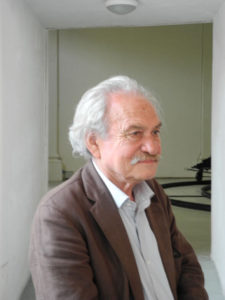 Jannis Kounellis, Pesaro, 16 luglio 2016 (ph L. Marucci)
Jannis Kounellis, Pesaro, 16 luglio 2016 (ph L. Marucci)
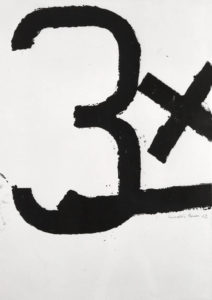 Jannis Kounellis, Senza titolo, 1962, vernice su cartoncino, 70 x 50 cm
Jannis Kounellis, Senza titolo, 1962, vernice su cartoncino, 70 x 50 cm
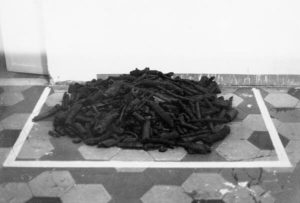 “carbone”, 1968 (Archivio fotografico Luciano Marucci)
“carbone”, 1968 (Archivio fotografico Luciano Marucci)
 Senza titolo, gennaio 1969, Galleria L’Attico, Roma (courtesy Archivio L’Attico; ph Claudio Abate)
Senza titolo, gennaio 1969, Galleria L’Attico, Roma (courtesy Archivio L’Attico; ph Claudio Abate)
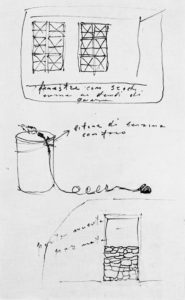 Progetto dell’installazione (modificato in corso d’opera), VIII Biennale d’Arte Contemporanea, “Al di là della pittura”, San Benedetto del Tronto, luglio 1969
Progetto dell’installazione (modificato in corso d’opera), VIII Biennale d’Arte Contemporanea, “Al di là della pittura”, San Benedetto del Tronto, luglio 1969
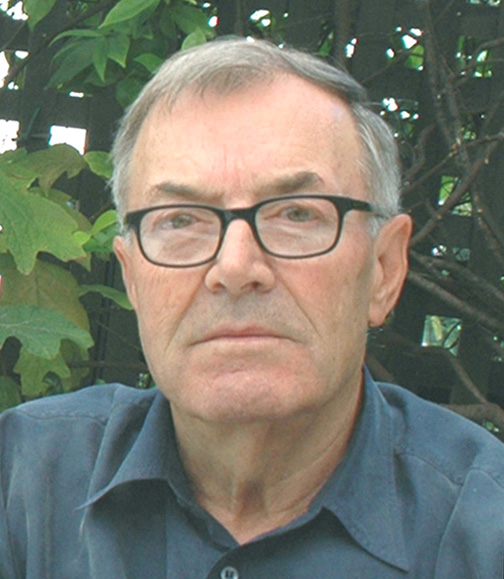
I’m Luciano Marucci, born by case in Arezzo and I look my age… After a period in which I dedicated myself to journalism, applied ecology, environmental education and traveling the world, I occasionally collaborated as an art critic with specialized magazines (“Flash Art”, “Arte & Critica”, “Segno”, “Hortus”, “Ali”) and with varied cultural periodicals. Since 1991 in “Juliet” art magazine (in print and edition) I have regularly been publishing extensive services on interdisciplinary topics (involving important personalities), reportages of international events, reviews of exhibitions. I have edited monographic studies on contemporary artists and book-interviews. As an independent curator I have curated individual and collective exhibitions in institutional and telematic spaces. I live in Ascoli Piceno.


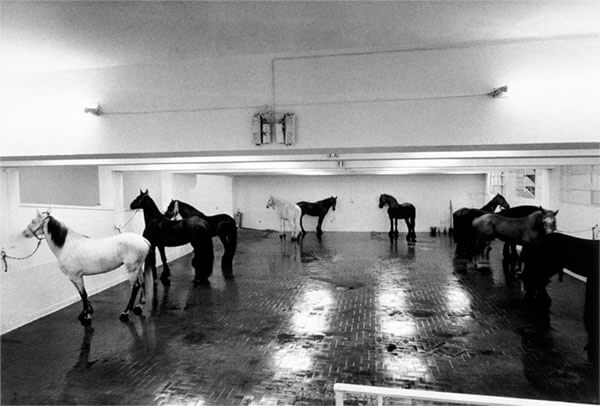




NO COMMENT